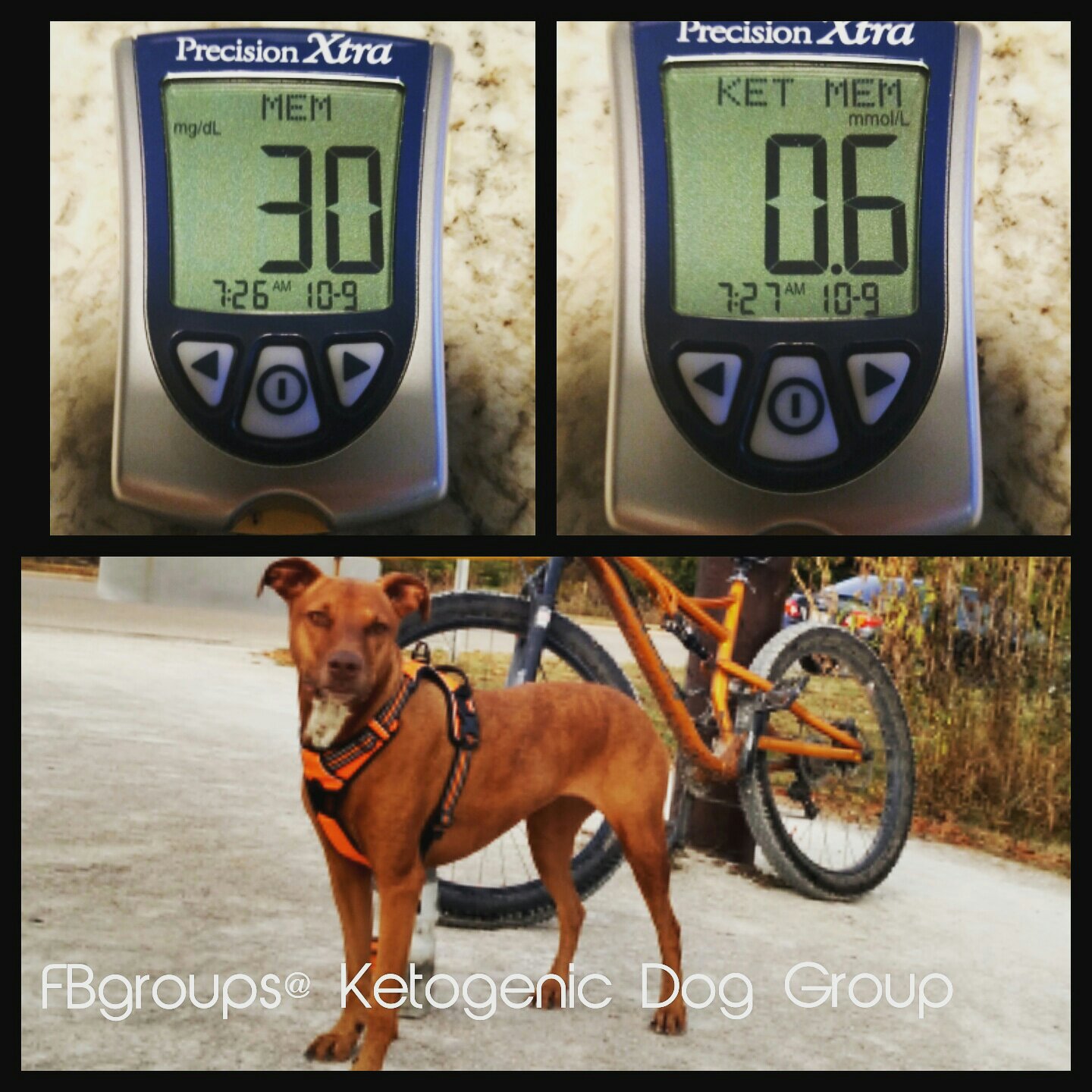Can a Ketogenic Diet help dogs with Cancer? We think so. And we have countless examples of dogs afflicted with Cancer that have shown remarkable improvements !
The main reason I started using a ketogenic diet for my dog Emie, was to try and prevent the re-occurrence of her Mast Cell Cancer after her initial Diagnosis back in 2017, and as of 2022 I am happy to say we’ve had no further recurrence of her MCT to date.
MCT can be a tricky one, as many dogs who get them just seem to open Pandora’s box of never ending recurrences of them coming back. When My dog was diagnosed with cancer I feverishly started researching how I could help her, and the number one thing was to improve her diet but there was so much conflicting information online about what is the best diet to feed a dog with cancer, after a lot of tireless nights researching, It soon became evident that a Ketogenic Diet was my best option to feed my dog with cancer.
You can read about Emie’s story under the menu bar and also access an entire section dedicated to why we’re using keto for cancer. But very briefly, a keto diet virtually eliminates carbohydrates from the diet thus drastically reducing the sugar/glucose that is produced. sugar feeds cancer. And we feed a moderate amount of protein, excess protein is also converted to sugar in the body through a process called gluconeogenesis where the protein and amino acids are converted to glycogen/aka glucose through the liver. The main source of fuel in a keto diet is FAT. Cancer does not utilize fat very well as a fuel source. Once the body adapts to high fat, low carb it goes into Ketosis, elevates ketone levels and starts using fat and ketones as it’s primary fuel source instead of carbs/sugar/glucose. And the liver starts producing Ketones which the brain and body then uses as fuel instead of glucose. We monitor the glucose and ketone levels in the body by measuring with a meter to ensure that the levels are where we want them to be and to make sure their body is in ketosis. Basically we want to drive the glucose levels down and ketone levels up in the body. And a big part of this diet is the fact that it is very calorie restricted. we do not feed any additional foods or treats. CLICK HERE FOR A VERY DETAILED EXPLANATION OF WHAT, WHY, AND HOW: KETOGENIC DIET FOR CANCER
-Keto is not just for cancer!-
An added perk to all of this was the fact that my dog lost an amazing 17 lbs in a mere 2 months of diet and exercise and we overcame her chronic issues of terrible yeasty ears that she had the entire time she ate kibble for the first 5 years of her life. Switching her diet to a Raw Ketogenic feeding Literally giving her a new lease on life and paved the way to get her in the best shape of her life. And we don’t just “talk the talk”, My dog Emie goes out with me on an almost daily routine running a min of 10 miles a day. well, she runs and I ride my mountain bike!. But this is something that was physically impossible for her to do prior to starting a Raw Ketogenic Diet. Impossible.
Before we started this diet, at best she was doing around maybe 4 mile runs with me and she certainly could not go back the next day and do it again. on a good month back then we would maybe get around 40 miles a month in. Today our monthly averages are around 200 miles a month on the conservative side, 300+ during peak months. So I’ve seen firsthand the power that a proper diet has on a canine.
-Keto Diets are not a “Fad”-
So despite what you may have heard that ” keto diets are only for cancer” they most certainly are not beneficial for just that. Helping to treat Epilepsy, Diabetes and arthritis are just a few other things Ketogenic diets are useful for. Or “ those high fat diets will cause pancreatitis” guess again, I’ve been feeding this way for over 4 years with no symptoms of pancreatitis. We have over 6,400 members in the Ketogenic Dog Group on FB, and not one single reported case of pancreatitis from RAW fed ketogenic diets. I’ve worked with hundreds upon hundreds of pet parents across the world with these diets and not one of them have ever had an issue with pancreatitis. In fact, THE ONLY times that we EVER have had reported cases are always when the pet owner takes it upon themselves to cook the meals despite explicit instructions to never cook these meals. High heat cooking is what can cause pancreatic issues in these dogs.
And some may say that keto is a “fad”, guess again. Ketogenic diets have been around in the 1920’s when they were the STANDARD OF CARE to treat epilepsy in humans before big pharma figured out a way to capitalize on pharmaceutical epilepsy drugs. And actually, Ketogenic are STILL the standard of care in some instances of epilepsy in humans, particularly in children. –Checkout the Charlie Foundation.-
Before I started my dog on keto , I knew about it because one of my good friends daughter has been on a ketogenic diet since birth to manage her seizures due to an extremely rare disease called GLUT1 deficiency. There is NO medical treatment, or drugs/medication to deal with this disease. The only way to deal with GLUT1 is with a ketogenic diet. In a nutshell, GLUT 1 deficiency is a disease where the protein that transports glucose across the blood brain barrier is not working properly, so if glucose can’t cross the blood brain barrier, and the brain can’t access the glucose it needs, the person experiences seizures because the brain isn’t receiving the glucose it needs to function properly. Ketogenic diets combat this because the brain can also use Ketones as its fuel source. So ketones are able to “fuel” the brain despite the fact that the Glut1 disease prohibits glucose from fueling the brain as is would normally happen. Ketones are able to cross the blood brain barrier on their own without the need for the GLUT1 protein that is not functioning properly with GLUT1 deficiency disorder.
I am happy to say that little baby is now 7 yrs old and keto has allowed her to maintain an otherwise normal life despite the fact that there is no medicinal way to deal with this disease. Did keto cure her disease? no. There is no cure. But by simply altering the macronutrient proportions of Fat,protein,carbs, keto has afforded her to live “with” and manage her disorder instead of the disorder controlling her life.
How Rare is Glut1?
“GLUT1 deficiency syndrome is a rare disorder. Approximately 500 cases have been reported worldwide since the disorder was first identified in 1991. In Australia, the prevalence of the disorder has been estimated at 1 in 90,000 people. However, researchers suggest that the disorder may be underdiagnosed, because many neurological disorders can cause similar symptoms-“
source- nih.gov
So a diet that’s been around for 100 years is by no means a “fad diet”. If anything, the diets we’ve implemented for dogs and humans over the past 100 years should be considered a fad, because it is not natural. it is not natural for dogs or humans to be consuming so much carbohydrates as we do. ESPECIALLY for Canines. They have ZERO nutritional requirements for CARBS. let me repeat that , ZERO. So why has it become standard to feed such high carbohydrate kibble diets to our dogs? The damaging effects it has on their organs is profound. They are not designed to consume a diet that is constantly elevating their blood glucose levels in their bodies. But I’m not going to go down the laundry list of all that in this little story. Perhaps one of the best books I’ve read that goes into great detail about this is from Dr.Richard Patton, renowned animal nutritionist. I would highly suggest his book, Ruined by excess, perfected by lack. In this book he brilliantly points out that dogs, and humans alike, have numerous hormones that nature has given us to RAISE glucose levels in the times of famine, but yet there is only ONE hormone to LOWER glucose in the body. And that is insulin. This shows us that dogs and humans are designed to deal with “lack” in the diet, however- they are not designed to deal with EXCESS in the diet. And the obesity and diabetes statistics between dogs and humans today should be a jaw dropping slap in the face as to what is wrong with our diets for both our dogs and people. neither of the two species are designed to live in a constant state of excess. Statistics show that over 50% of dogs in the USA are obese. read that again. Over half of all dogs.
-Do your Homework-
It’s very important to point out, as with ANY home prepared diets for your dog, It’s critically important that they are done right to ensure your dog is getting ALL the nutrients they need to thrive. “basic” keto diets consisting of nothing more than ground meat, coconut oil, and veggies come nowhere near providing all the nutrition your dog needs. Even the ever so popular 80/10/10 Raw diets that everyone and their brother are feeding can lack important nutrients if they are not done right. Pre-made Raw foods that you can buy are not always “up to par” , it’s our responsibility as the pet owner to know what the nutritional requirements are that our dogs need and to know that the food we are feeding is providing those nutrients from species appropriate food sources. i.e. Meat, organs, heart, liver, kidney. things that a canine are designed to be eating.
Through our journey I’ve spent a great deal of time focusing on the nutritional side of ketogenic diets for dog’s making sure that all the nutritional needs that a canine needs are properly met. Which has evolved into formulating Balanced Raw ketogenic recipes for people all over the world. More details here.
This website has been a labor of love compiling information that has helped many pet parents, I hope you find it’s content useful as there is a lot in here.
So do your homework to make sure you are providing your dog a proper diet no matter WHAT type of home prepared diet you choose for your beloved dog.
See more about her amazing transformation here and to see some of the success stories of the dogs in the KDG, scroll to the bottom of this page.

Do Ketogenic diets really work? Read “Success Stories from the KDG”
click on the pic below to read more !

PLEASE BE AWARE THAT KETO PET SANCTUARY IN TEXAS IS NO LONGER IN OPERATION.
